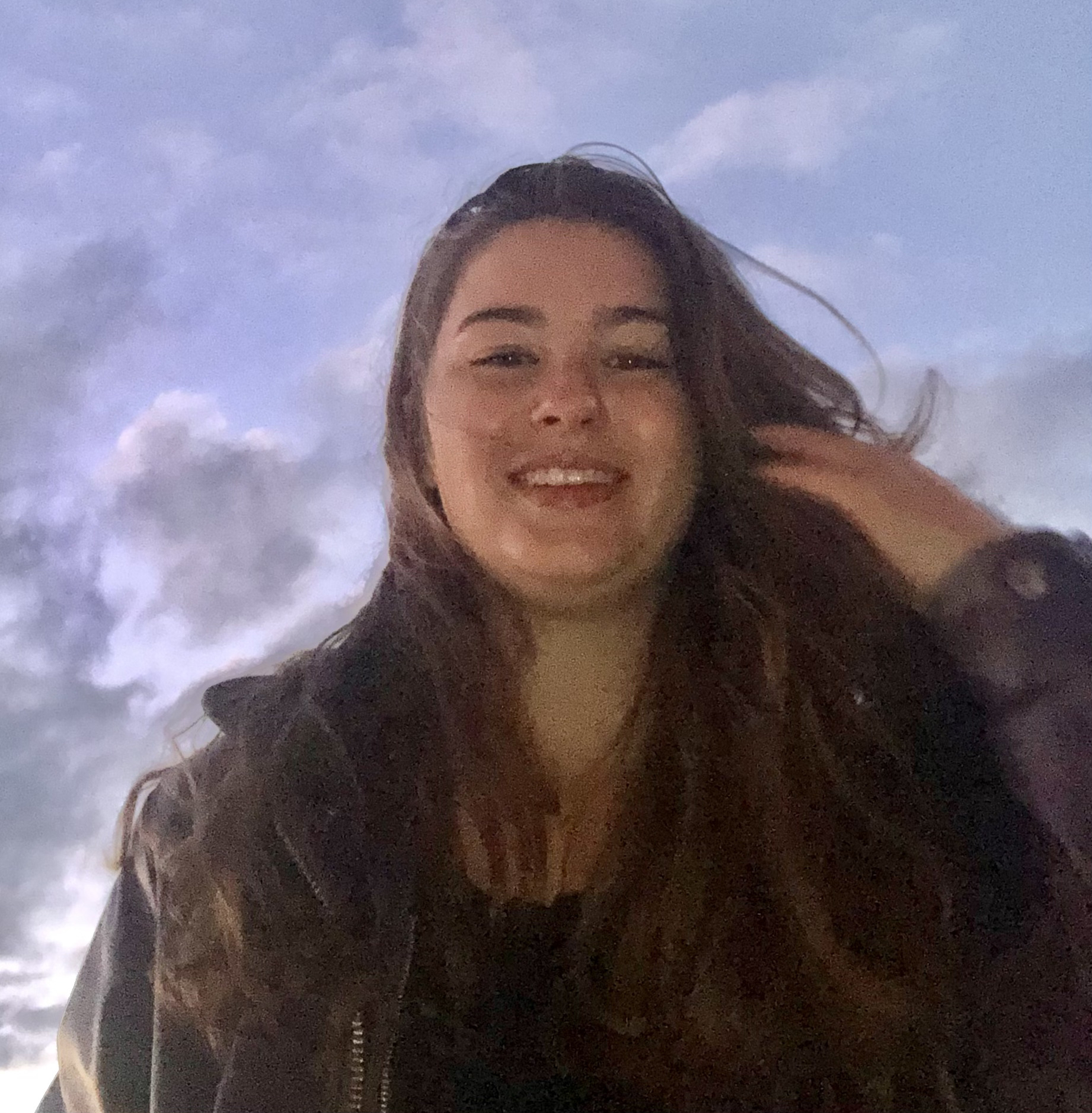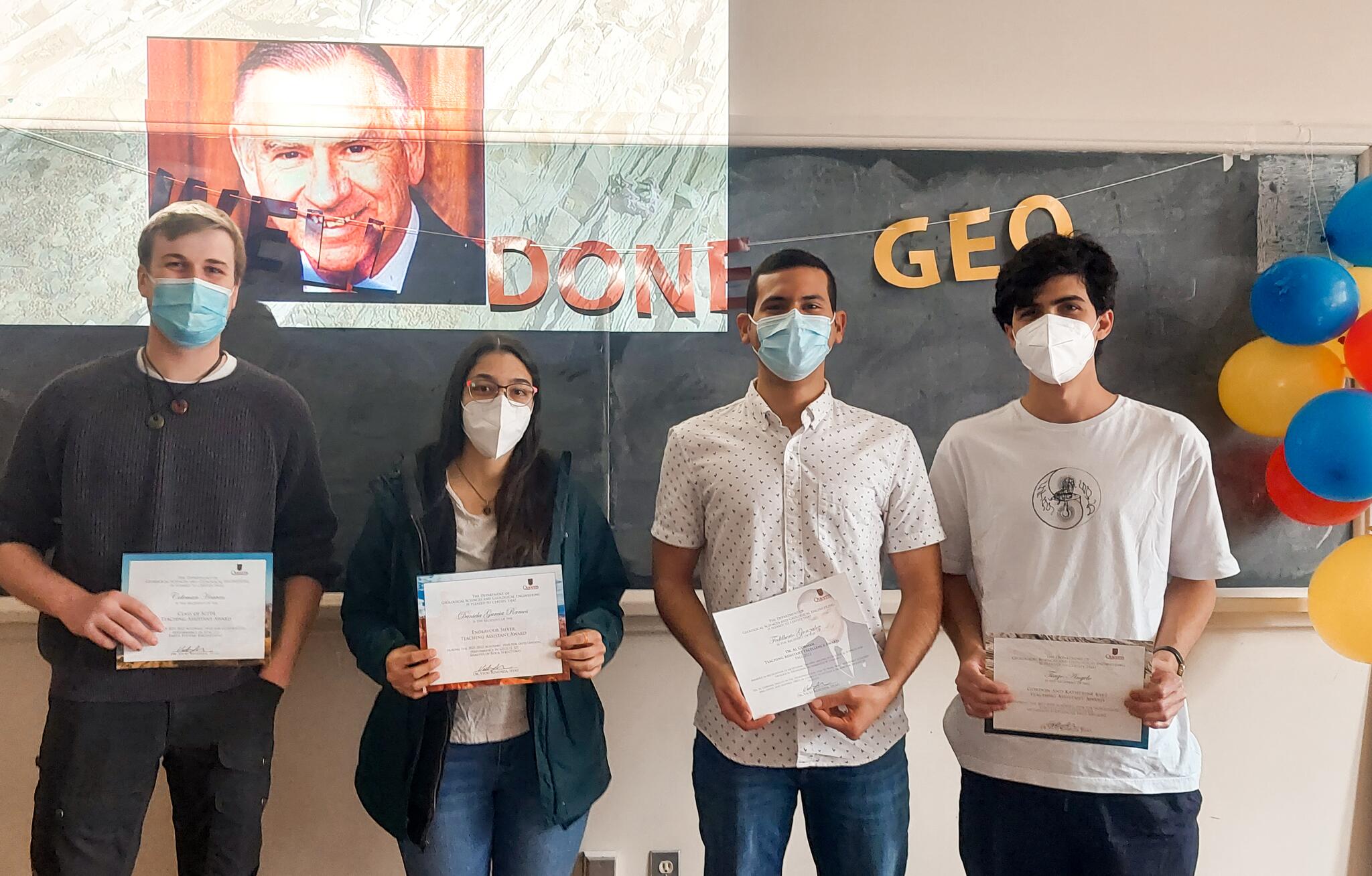Tackling Real World Problems From Queen's Campus
Courtesy of the Faculty of Arts and Science
April 29, 2022 - Updated May 5, 2022

University Wide
MyQueensU - SOLUS, MyHR and more Office 365 Outlook on the web - Email onQ Library eReserves Web ProxyFaculty / School Portals
Business - Program Portals Education - Faculty & Staff Portal Grad Studies - Faculty & Staff Portal Health Sciences - Elentra Law - QLaw Change password / Manage NetIDCourtesy of the Faculty of Arts and Science
April 29, 2022 - Updated May 5, 2022

Congratulations to undergraduate student, Marie-Helene Lapointe, who has been awarded the WiE Undergraduate Summer Research Award for 2022.

Pictured above from left to right: Coleman Heaven, Daniela Garcia Ramos, Fedilberto Gonzalez, Tiago Angelo.
Congratulations to all Named TAship Award winners, for Fall 2021! Named TAship awards recognize a TA that has gone above and beyond in the classroom, lab, or in the field.
Date
Thursday April 7, 2022Location

On Thursday April 7, Dr. Yajing Liu, McGill University, will be giving a talk for the Queen's Department of Geological Sciences and Geological Engineering.
Dr. Liu will be presenting on: "Modeling slow slip events along plate boundary faults".
Date: Thursday, April 7, 2022
Time: 11:30am
Zoom link: Email dumondl@queensu.ca for the Zoom link
Date
Friday April 1, 2022Location
VirtualOn Friday, April 1, Dr. Marc Laflamme, PhD'07, University of Toronto, Mississauga and Chair of the IUGS-ICS Ediacaran Subcommission,, will be giving a talk for the Queen's Department of Geological Sciences and Geological Engineering.
Dr. Laflamme will be presenting on: "Complexity in the oldest animal ecosystems".
Zoom link: Email dumondl@queensu.ca for the Zoom link
Abstract:
Ecosystems are built from biological interactions between organisms. Historically, Ediacaran ecosystems were considered “simple” due to their antiquity, and due to our difficulty in classifying Ediacaran organisms. The Ediacaran–Cambrian transition signals a drastic change in both diversity and ecosystem construction. The Ediacara biota disappears and is replaced by more familiar Cambrian and Paleozoic metazoan groups. Although metazoans are present in the Ediacaran, their ecological contribution is dwarfed by Ediacaran-type clades of uncertain phylogenetic affinities, while Ediacaran-type morphologies are virtually non-existent in younger assemblages. Ultimately, the combination of studies on ecosystem construction, biostratigraphy, and biogeography showcases the magnitude of the transition at the Ediacaran–Cambrian boundary.
Bio:
I obtained my PhD in geology and paleontology at Queen’s University in 2007, and ever since then have been interested in the classification and preservation of the Ediacara biota, the oldest large and complex organisms in the rock record. These globally-distributed soft-bodied organisms abruptly appear in the fossil record some 578 million years ago, and represent the dominant members of early ecosystems up until the Cambrian explosion of animals. My research focuses on the evolutionary hierarchy and relationships amongst the Ediacara biota, and their relationships to animals. I use morphometric techniques to study the growth and differentiation in closely related species, and apply modeling techniques to evaluate feeding strategies in these enigmatic organisms. I also apply advanced instrumentation such as Scanning Electron Microscopy (SEM) to study the geochemical and sedimentological context of soft-tissue fossilization. My recent research focuses on understanding the fossilization of soft tissues, combining laboratory decay experiments with extensive field-based studies in Newfoundland, South Australia, and Namibia. My fieldwork showcases how growth, feeding, reproduction, and inter-species competition can be revealed through studies of fossil communities.
Georgia Fotopoulos (Professor, Department of Geological Sciences and Geological Engineering, Queen’s University) and Calvin Klatt (Director and Chief Geodesist, Canadian Geodetic Survey, Surveyor General Branch, NRCan) are chairing a scientific session at the 2022 Canadian Meteorological and Oceanographic Society (CMOS) 56th Congress, the Canadian Geophysical Union (CGU) Annual Meeting and the 78th Eastern Snow Conference (ESC).
The Faculty of Arts and Science, and Smith Engineering at Queen’s University, are both partnering with world-renowned Canadian photographer and Queen's Honorary Degree recipient, Edward Burtynsky, to help realize his new public art piece titled, Standing Whale.
The piece will be Edward's first large-scale public sculptural work, and will be a life-size, artistic re-imagining of a whale skeleton.
By Julie Brown, Media Relations Officer

Now in its ninth season, the History Channel's The Curse of Oak Island has enlisted the help of the Queen's Facility for Isotope Research. (Supplied photo)
Congratulations to all Named TAship Award winners, for Fall 2020, and Winter 2021. Named TAship awards recognize a TA that has gone above and beyond in the classroom, lab, or in the field.
Learn more about the Named TAship program here.
Here is a complete list of the award recipients: